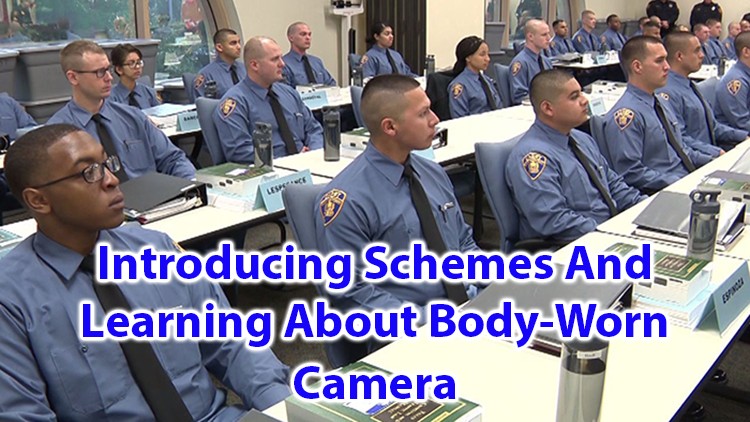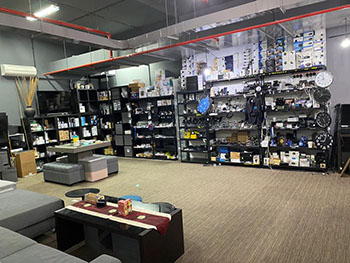Introducing Schemes and Learning about Body-Worn Camera
The recent emergence of body-worn cameras has already had an impact on policing, and this impact will only increase as more agencies adopt this technology. The decision to implement body-worn cameras should not be entered into lightly. Once an agency goes down the road of deploying body-worn cameras and once the public comes to expect the availability of video records. It will become difficult to have second thoughts or to scale back a body-worn camera program. A police department that deploys body-worn cameras is making a statement that it believes the actions of its officers are a matter of public record. By facing the challenges and expense of purchasing and implementing a body-worn camera system, developing policies, and training its officers on how to use the cameras, a department creates a reasonable expectation that members of the public and the news media will want to review the actions of officers. And with certain limited exceptions that this publication will discuss, body-worn camera video footage should be made available to the public upon request not only because the videos are public records but also because doing so enables the police department to demonstrate transparency and openness in their interactions with members of the community.
Over the past year, the Police Executive Research Forum (PERF), with support from the U.S. Department of Justice’s Office of Community Oriented Policing (COPS Office), researched the use of body-worn cameras in police agencies. PERF interviewed more than 40 police executives who have experience with body-worn cameras, reviewed more than 20 body-worn camera policies submitted by police agencies, and hosted a one-day conference in Washington, D.C., where more than 200 police chiefs, sheriffs, scholars, federal justice officials, and other experts discussed their experiences with body-worn cameras.
Law enforcement agencies are using body-worn cameras in various ways: to improve evidence collection, to strengthen officer performance and accountability, to enhance agency transparency, to document encounters between police and the public, and to investigate and resolve complaints and officer-involved incidents.
General recommendations
Each law enforcement agency is different, and what works in one department might not be feasible in another. Agencies may find it necessary to adapt these recommendations to fit their own needs, budget and staffing limitations, state law requirements, and philosophical approach to privacy and policing issues.
When developing body-worn camera policies, PERF recommends that police agencies consult with frontline officers, local unions, the department’s legal advisors, prosecutors, community groups, other local stakeholders, and the general public. Incorporating input from these groups will increase the perceived legitimacy of a department’s body-worn camera policies and will make the implementation process go more smoothly for agencies that deploy these cameras
- Policies should clearly state which personnel is assigned or permitted to wear body-worn cameras and under which circumstances.
- If an agency assigns cameras to officers on a voluntary basis, policies should stipulate any specific conditions under which an officer might be required to wear one.
- Agencies should not permit personnel to use privately-owned body-worn cameras while on duty.
- Policies should specify the location on the body on which cameras should be worn.
- Officers who activate the body-worn camera while on duty should be required to note the existence of the recording in the official incident report.
- Officers who wear body-worn cameras should be required to articulate on camera or in writing their reasoning if they fail to record an activity that is required by department policy to be recorded.
Lessons learned on privacy considerations
- Body-worn cameras have significant implications for the public’s privacy rights, particularly when it comes to recording victim interviews, nudity, and other sensitive subjects and when recording inside people’s homes. Agencies must factor these privacy considerations into decisions about when to record, where and how long to store data, and how to respond to public requests for video footage.
- When officers should be required to activate their cameras, the most common approach is requiring officers to record all calls for service and law enforcement-related encounters and activities and to deactivate the camera only at the conclusion of the event or with supervisor approval.
- It is essential to clearly define what constitutes a law enforcement-related encounter or activity in the department’s written body-worn camera policy. It is also useful to provide a list of specific activities that are included, noting that the list is not necessarily all-inclusive. Many agencies give a general recommendation to officers that when they are in doubt, they should record.
- To protect officer safety and acknowledge that recording may not be possible in every situation, it is helpful to state in policies that recording will not be required if it would be unsafe, impossible, or impractical.
- Significant privacy concerns can arise when interviewing crime victims, particularly in situations involving rape, abuse, or other sensitive matters. Some agencies prefer to give officers discretion regarding whether to record in these circumstances. In such cases, officers should take into account the evidentiary value of recording and the willingness of the victim to speak on camera. Some agencies go a step further and require officers to obtain the victim’s consent prior to recording the interview.
- To promote officer accountability, most policies require officers to document, on-camera or in writing, the reasons why the officer deactivated the camera in situations that are otherwise required to be recorded.
- When making decisions about where to store body-worn camera footage, how long to keep it, and how it should be disclosed to the public, it is advisable for agencies to consult with departmental legal counsel and prosecutors.
- To help protect privacy rights, it is generally preferable to set shorter retention times for non-evidentiary data. The most common retention time for this video is between 60 and 90 days.
Lessons learned about the impact on community relationships
- Agencies have found it useful to communicate with the public, local policymakers, and other stakeholders
about what the cameras will be used for and how the cameras will affect them.
- Social media is an effective way to facilitate public engagement.
- Requiring officers to record calls for service and law enforcement-related activities rather than every encounter with the public can ensure officers are not compelled to record the types of casual conversations that are central to building informal relationships within the community.
- Recording the events at a live crime scene can help officers capture spontaneous statements and impressions that may be useful in the later investigation or prosecution.
- Engaging the community prior to implementing a camera program can help secure support for the program and increase the perceived legitimacy of the program in the community.
- Requiring officers to document, on-camera or in writing, the reasons why they deactivated a camera in situations that they are otherwise required to record promotes officer accountability.
Lessons learned about addressing officer concerns
- As with any other deployment of new technology, program, or strategy, the best approach includes efforts by agency leaders to engage officers on the topic, explain the goals and benefits of the initiative, and address any concerns officers may have.
- Briefings, roll calls, and meetings with union representatives are effective means to communicate information about a body-worn camera program.
- Creating an implementation team that includes representatives from across the department can help strengthen program legitimacy and ease implementation.
- Body-worn cameras can serve as a teaching tool when supervisors review footage with officers and provide constructive feedback.
- The length of time recorded data will be retained by the agency in various circumstances.
- The process and policies for accessing and reviewing recorded data, including the persons authorized to access data and the circumstances in which recorded data can be reviewed.
- Policies for releasing recorded data to the public, including protocols regarding redactions and responding to public disclosure requests.
In summary, policies must comply with all existing laws and regulations, including those governing evidence collection and retention, public disclosure of information, and consent. Policies should be specific enough to provide clear and consistent guidance to officers yet allow room for flexibility as the program evolves. Agencies should make the policies available to the public, preferably by posting the policies on the agency website.
Conclusion
When implemented correctly, body-worn cameras can help strengthen the policing profession. These cameras can help promote agency accountability and transparency, and they can be useful tools for increasing officer professionalism, improving officer training, preserving evidence, and documenting encounters with the public. However, they also raise issues as a practical matter and at the policy level, both of which agencies must thoughtfully examine. Police agencies must determine what adopting body-worn cameras will mean in terms of police-community relationships, privacy, trust and legitimacy, and internal procedural justice for officers.
Police agencies should adopt an incremental approach to implementing a body-worn camera program. This means testing the cameras in pilot programs and engaging officers and the community during implementation. It also means carefully crafting body-worn camera policies that balance accountability, transparency, and privacy rights, as well as preserving the important relationships that exist between officers and members of the community.
References
policeforum.com. [Online]
Available at: https://www.policeforum.org/assets/docs/Free_Online_Documents/Technology/implementing%20a%20body-worn%20camera%20program.pdf









